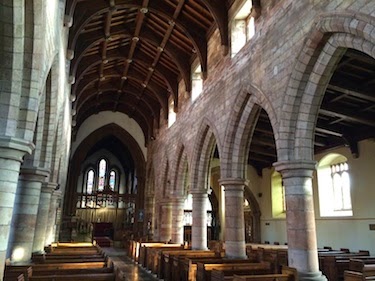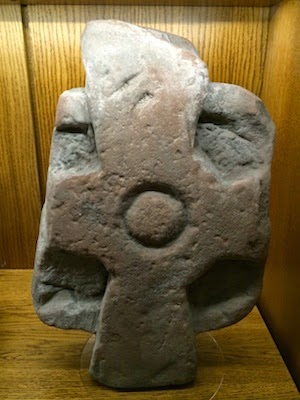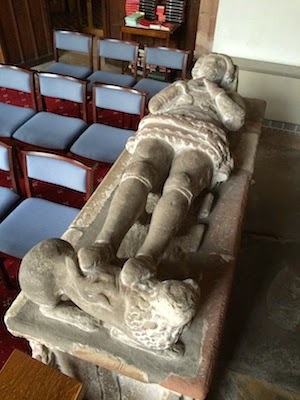 |
| St Stephen’s Parish Church, Kirkby Stephen, England |
For a nomadic empty-nest travel blogging couple with a penchant for visiting medieval English cathedrals, landing in Kirkby Stephen, England to wind down our six months in Europe offered us a surprise opportunity to see a splendid parish church. While it’s not a cathedral, it is nicknamed the “Cathedral of the Dales” for it’s grand arches, high-ceilinged nave, and quite a few interesting finds, like the Loki Stone we blogged about a couple of days ago. It might not be the home of an Anglican bishop, but it’s pretty much the grandest small village church we’ve ever seen.
Kirkby Stephen (pronounced “KERR-bee”, by the way) is a market town of less than 2,000 people situated on the eastern edges of the English country of Cumbria. It’s a quaint and picturesque English village on the Eden River surrounded by sheep farms and the hills and mountains of Northern England. Less than an hour to the west is the UK’s Lake District National Park, and the cities of Penrith and Carlisle are easily accessible; Hadrian’s Wall and the Scottish frontier are about an hour north.
As small as Kirkby Stephen is, it has a healthy tourist base, particularly for hikers and mountaineers venturing into the nearby park, with shops, two splendid pubs, and even B&B’s and a hostel. While the church is on the far end of town from where we’re staying, it’s only a pleasant ten minute walk away owing to the village’s small size. The day we went, we were the only two people in the church, allowing us to explore it in great, unhindered detail.
Saint Stephen’s Parish Church is shared by both an Anglican and a Catholic congregation. Like so many churches, the site it stands on has had a church since Anglo-Saxon times. The current structure was built in 1240 but saw significant renovations in the 1800’s. The architecture of the building alone would make a swing through Kirkby Stephen worth it, but there’s also a few other items worth mentioning, and not just that Loki stone.
 |
| 11th Century Stone Carving |
During those 19th century renovations and over the ensuing century and a half of maintenance, an interesting collection of stone artifacts has been collected. The church has thoughtfully put these items on display, such as the red sandstone cross shown above. How and where it was originally used in the church is uncertain, as is its age, though it’s believed to date from the 11th century. There are a couple of dozen such pieces as this.
 |
| Sir Andrew de Harcla |
Also in Kirkby Stephen’s parish church are a couple of chapels that contain the final resting spots of some interesting people from English history, including some of Bess of Hardwick’s kin (Lori has become enamored with Bess of Hardwick since we visited her Chatsworth House and has read a great biography of her), and the tomb of Sir Andrew de Harcla, shown above. A nearby plaque extols de Harcla as the Sheriff of Cumberland, the Warden of Carlisle, and successful defender of the Castle from Scotland’s King Robert Bruce. Then he went on to be “Warden of the West Marches of Cumberland and Westmoreland”, parliament made him Lord Harcla in 1321, and he even became the Earl of Carlisle.
Then, explicably, he was executed in 1322. How fast English noble’s fortunes changed in the 1300’s! For the rest of the story, we have to turn to Wikipedia. Turns out de Harcla had attempted to negotiate peace with Robert Bruce without King Edward II’s consent or knowledge. When Edward II found out, he wasn’t particularly happy about it.
Should you be hiking in the English Lake District National Park, take a detour through Kirkby Stephen and check out this surprisingly grand parish church, its Loki Stone, and keep an eye out for Sir Andrew de Harcla.






